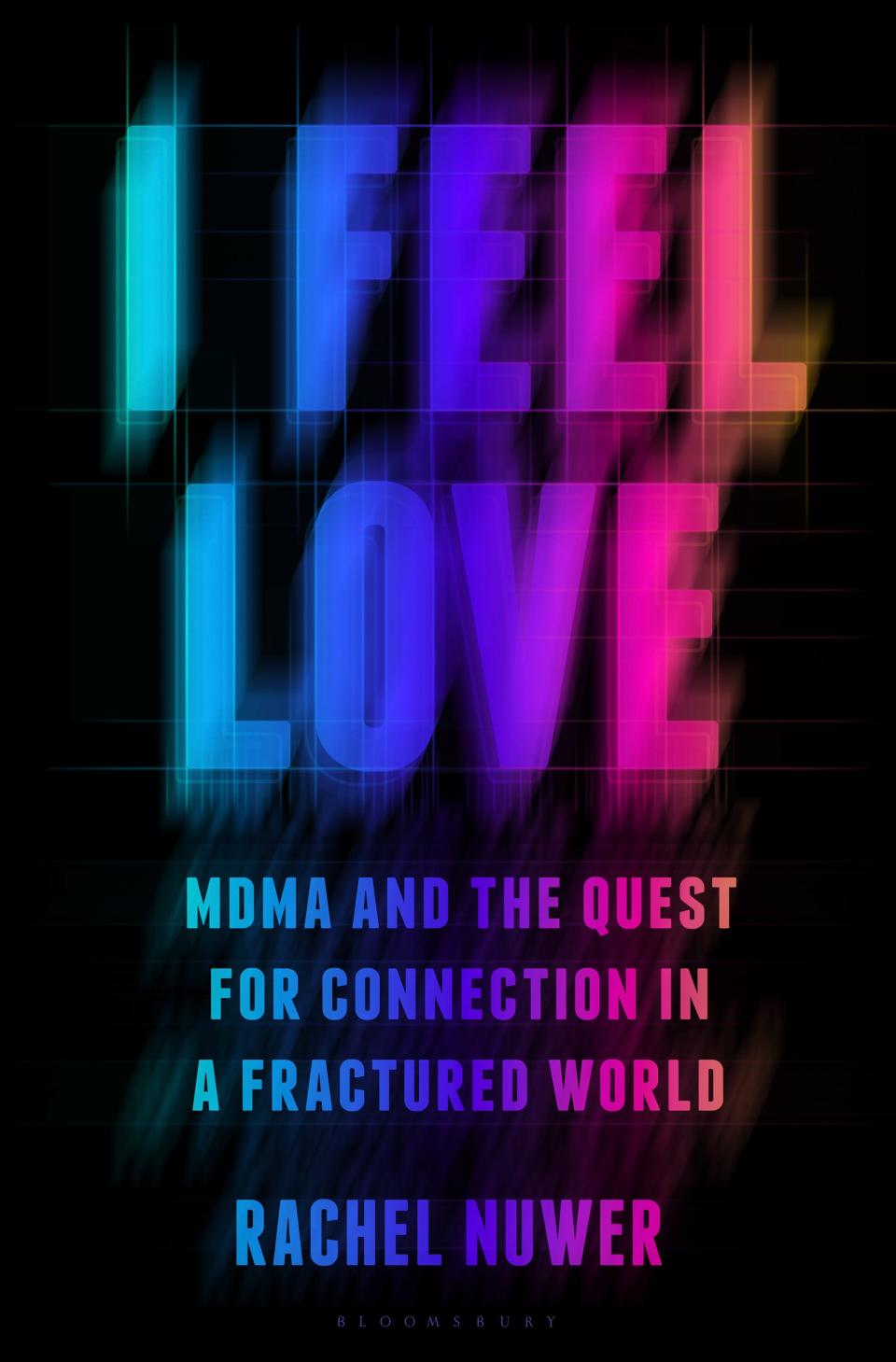-
MDMA, a schedule I drug, has received attention for its potential use as a therapeutic drug.
-
Researchers have used it to successfully treat depression, PTSD, and more.
-
Rachel Nuwer tells in her book ‘I Feel Love’ how therapy helped a veteran overcome PTSD.
It seems that psychedelic therapy has gone from an experimental treatment to mainstream acceptance overnight. That’s partly due to the many anecdotes surrounding its success in treating conditions like PTSD.
In her new book “I Feel Love,” author Rachel Nuwer tells the story of Vietnam veteran John Reissenweber, whose time in the service transformed his personality and left him feeling isolated from everyone in his civilian life.
The following is an excerpt from Rachel Nuwer’s new book: “I Feel Love: MDMA and the Search for Connection in a Broken World.“
John never thought he might have a problem, and he certainly never thought he might have PTSD. “Oh, no! To have PTSD makes you weak,” he said of his former mentality.
He never even filed with the VA for benefits he was entitled to because of his ruptured eardrums because “I didn’t need anyone’s help,” he said. “I didn’t need anyone to tell me I was disabled because I came back with ten fingers and ten toes and others didn’t.”


In 2003, John’s life changed for the better when he met Stacy Turner, his current wife. They had connected online and the first time he saw her in person he exclaimed, “My God, you are so beautiful!”
“How do you not love a man who says that to you with all that warmth in his eyes?” Stacy said. “John loved me so much, and I felt the same way about him.”
Things were fine for six months, but then Stacy started to “see the cracks,” as she put it. One fine afternoon, they were sitting on a blanket in a wooded area of San Francisco’s Glen Canyon Park, having a picnic, when John’s behavior suddenly changed. He started scanning the area and became “really cold and distant,” Stacy recalled.
“Then he starts talking about strategic and vulnerable positions and where to worry about a firefight and where people can hide. I looked at him and thought, ‘He’s back in Vietnam, the fuck.’ I just corked the wine, grabbed my things and said, “We’re going home, this isn’t a good place for you to be.”
Stacy loved John, but the stress and tension of tiptoeing around his temper only worsened over the years. “No matter what I said or did, the chances of it being wrong were enormous, and if it was wrong, the consequences were catastrophic,” she said.


Twice she kicked him out, but they always got back together. Finally, Stacy told John that he had to get professional help or she would be done for. A psychiatrist diagnosed him with PTSD, but talk therapy did not improve his condition. One day his psychiatrist handed him a copy of Michael Pollan’s ‘How to Change Your Mind’ and told him about the MAPS MDMA studies.
“I had a very strong aversion to mind-altering drugs, because I knew by now that I was wrapped up pretty tightly,” John said. “I was afraid that if I did anything, I would really be undone.”
Stacy and John’s doctor convinced him to file for the trial anyway. But when he underwent a PTSD evaluation to find out if he qualified, he returned to his old habit of downplaying his symptoms.
“I lied to myself again, as I have done all my life since I came back from Vietnam,” he said. It worked: Shortly after taking the test, he received a polite letter informing him that he did not meet the criteria for the study.
Stacy wasn’t having it. She contacted Gregory Wells, a psychologist who co-led the San Francisco trials, and asked him to take a closer look at their evaluation process.
“If you were to fire John because of high blood pressure, I would understand,” she said. “But if you fired him because you didn’t think he was messed up enough, then you really missed the boat and he completely snowed you under.”
Stacy’s letter satisfied the solution. In August 2019, John arrived at Wells’ office for his first session of MDMA-assisted therapy. “I felt a combination of scared, stupid and determined,” he said. “I got to the point where I realized maybe there’s something going on, maybe I have some PTSD. And maybe this can help.”
Lying on the daybed with headphones and eye shadow on, it didn’t take long for John to “realize something was going on,” he said. He felt deeply affected by the music and groundless in his own body. Suddenly a vision appeared in his mind.


He stood on a lunar plane reminiscent of the Apollo 10 “Earthrise” photo, with stars everywhere. In the bottom left corner was a dark, foreboding hole that John chose to ignore.
Instead, he focused on a liquid-like drop of energy that appeared before him, which John realized represented his consciousness merging at the moment of his birth. “Everything was nice, calm and serene,” John said. “I felt a connection with everything.”
However, when a second drop appeared and hit the ground, John heard helicopters, gunfire and screams – the disruption that Vietnam had wrought in his psyche. Although John’s therapists were “really great,” he said, he kept quiet. “I didn’t want to talk to anyone about it,” he said. “I did it alone.”
In the month after that first session, John felt more relaxed than he had felt in decades. He could take a walk outside and enjoy the wind on his skin. He could have a conversation with Stacy and imagine what she was thinking and feeling.
John began his second session of MDMA-assisted therapy and was curious to see what other benefits it could bring. Immediately his thoughts took him back to the same moonscape. The terrifying black pit was still there, but he focused solely on the first drop, and the second drop never came.
All day he lay on the couch, hugging himself, rocking back and forth, and petting a dog that one of his therapists had brought along. “I took care of that child of mine,” he said.
After his second session, John began to remember his dreams for the first time. However, a few days before his third and final session, he had a terrible nightmare: he was in military clothing, terrified, as the sounds of mortar shells overwhelmed him.
He was left with a sense of dread and went into the final MDMA session determined to tackle the black pit in the corner. “You can’t shy away from it anymore,” he told himself – and jumped right in.
He thought he was going to get through it – “as Pollan’s book said, ‘going to the light,’” he explained – but he ended up “completely and utterly stuck.” John spent the rest of the session in the pit, unable to move.
The next morning his whole body ached. When he came to see the therapist for his integration session, he was too afraid to go back into the room. He knew he needed more help than the limited clinical trial could provide, so he got a new therapist.


With her guidance, he came to realize that the black pit represented the anger and pain he had felt since Vietnam. That revelation allowed him to reexamine his life and pull out memories, one by one, like a series of file cards that he could rearrange into a coherent whole.
Although the MDMA-assisted therapy did not in itself cure John, it was “like an electric shock to the system,” he said. It revealed his pain and his fears, and more importantly, it showed him that he had the right to feel that way.
“It was like a complete and total rebirth,” he said. “It gave me the opportunity to look at myself and say, ‘You know, you don’t have to be perfect, you don’t have to be right, it’s okay to be who you are.’ Without this, I could have done all the cognitive behavioral therapy in the world and nothing would have happened.”


John continued traditional therapy and also became involved with the VA, where he connected with other veterans. In October 2021, he began volunteering with a VA program aimed at rehabilitating veterans through golf.
He no longer feels like he’s “running at 100 percent” all the time, he said, and he isn’t sent into a tailspin by the small, unavoidable obstacles that daily life throws his way. Most importantly, he has developed a deeper bond with Stacy, who he calls his guardian angel.
“I can talk to Stacy,” he said. “I’m not afraid to do that anymore.”
From I Feel Love: MDMA and the Search for Connection in a Broken World, now available from Bloomsbury Publishing. Copyright © 2023 by Rachel Nuwer. All rights reserved.
Read the original article on Business Insider